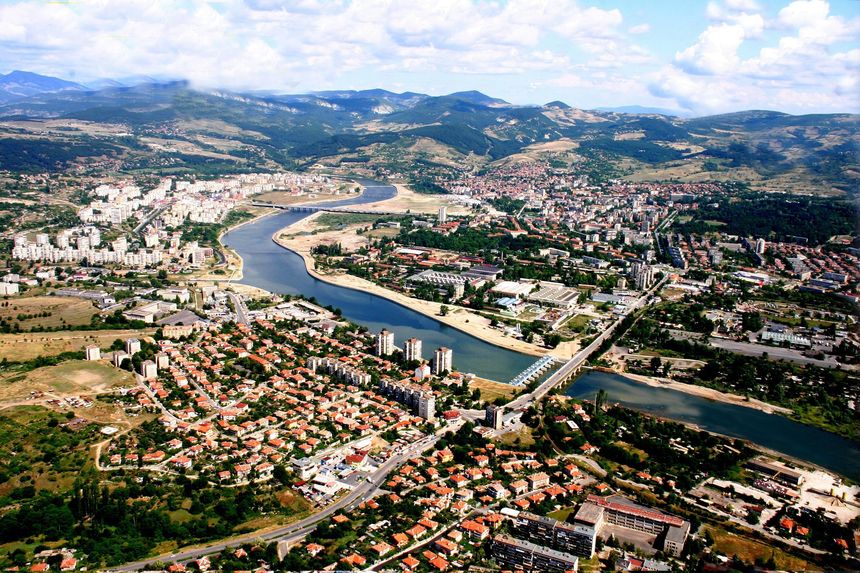
Kardzhali is a city in the low eastern part of Rhodope Mountains, on both banks of the river Arda between the Kardzhali Reservoir to the west and the Studen Kladenets Reservoir to the east. The town is 260 km (162 mi) southeast of Sofia. It has a crossroad position from Thrace to the Aegean Sea — part of European transportation route 9, via the Makaza mountain pass. Kardzhali has a humid subtropical mediterranean climate and it’s mostly dry all year round with the wettest month being December with just around ten days of rainfall. The city has hot summers and cold winters.
Kardzhali was the center of a Christian eparchy — Achridos during the Byzantine period. The Monastery of John the Precursor (Bulgarian: Йоан Продром or Йоан Предтеча) was built in the 6th-8th centuries and is now a monument of medieval architecture. A couple of other monasteries were built during this era, with some of them remaining until the early 19th century. The area was of strategic importance for the Bulgarian Empire during the Middle Ages and the remains of numerous Medieval fortress scattered on the surrounding hills can still be seen today.
According to the 2011 census, Kardzhali Province is the Bulgarian province with the highest relative proportion of ethnic Turks, though Kardzhali municipality and the city itself have a lower proportion of ethnic Turks than the rest of the province. According to the optional question on ethnic identification, the city itself has a Bulgarian majority (many Bulgarians in Kardzhali are Bulgarian Muslims, also known as Pomaks) of 61%, while Turks are 34.9% and others and undeclared are 4.1%. The city itself also, has a muslim majority (53%) with an important christian (47%) population. The municipal government today is primarily in the hands of the Turkish-dominated Movement for Rights and Freedoms.
Selected attractions to visit in the Kardzhali Province
1.The Petrified Wedding
Kuklica is known for the unusual revelry known as the Petrified wedding. This place is in Kratovo and it’s also known under the names Merry Wedding, Kuklitsi, Dolls and Drunk Matchmakers.
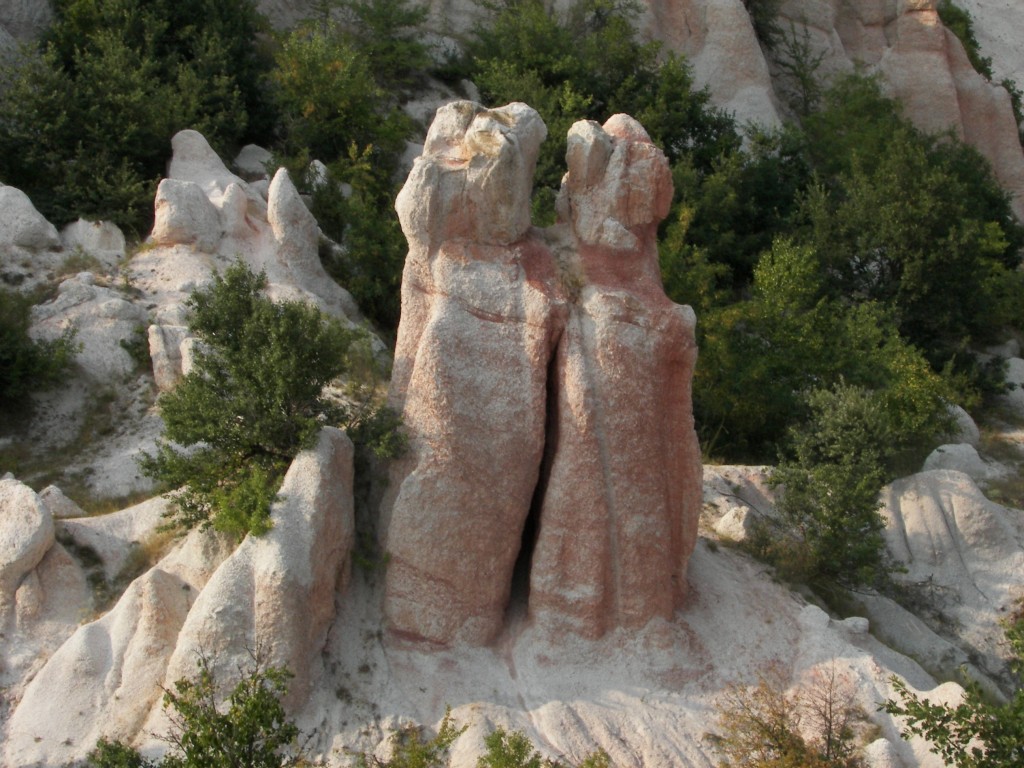
This unusual locality abounds with high earthen pillars and pyramids that look like dolls, and that’s how the place got its name Kuklica; Мacedonian: kukla (кукла) means doll. It should be noted that similar phenomenons exist in Serbian devils town and Russian Altai Mushrooms.
2. Perperikon
Perperikon is an ancient Thracian city where fire rituals were practiced on the largest cult altar in Southeast Europe.
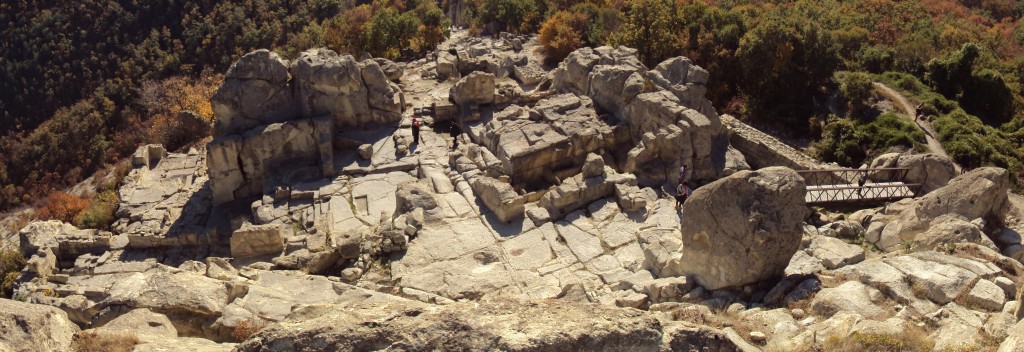
The Thracians who ruled an area from the Balkans to Bulgaria and Hungary, were expert metal workers making exquisitely crafted jewelry. In Homer’s Illiad he describes a Thracian chariot as “like no war-gear of men but of immortals.” Of all the ancient cultures, the Egyptians, the Greeks, the Thracians are some of the most mysterious. Seen by the Greeks as great warriors – as well as barbarians – the Thracians had no written language, and left behind little in the way of monumental architecture.
Perperikon (also Perpericon) is the largest megalithic archeological site in the Balkans, and currently being unearthed by Prof. Nikolai Ovcharov, known as the Bulgarian Indiana Jones. It sits on a high, rocky hill some 15 kilometers to the north of the present-day town of Kardzhali in Bulgaria.
3. The Stone Mushrooms
The stone mushrooms are rock formations, located east of the village of Beli Plast, at the road, connecting Kardzhali with Haskovo. The protected site has a total area of 3 hectares. It was declared a natural landmark by Order No 1427 of 13 May 1974.
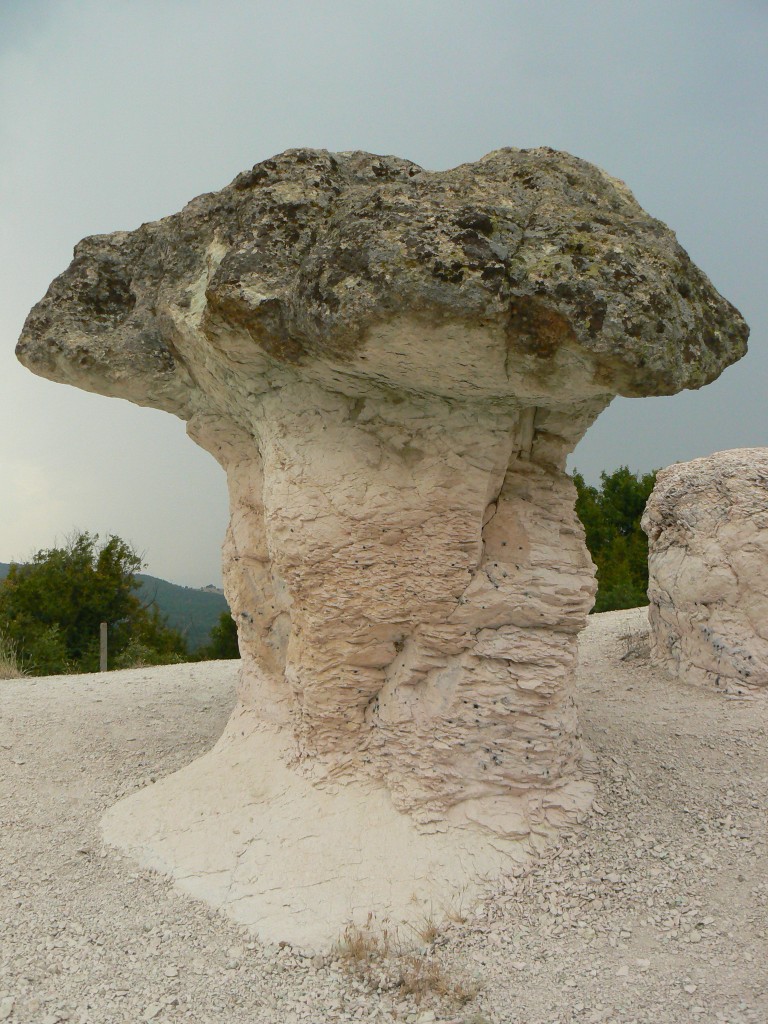
The rock formations have the shape of natural mushrooms – their stalks are pink, and the caps are green. The height of the mushroom stalks and the width of the caps are up to 2.5 meters. They are made of rhyolite volcanic tuffs, which are the result of intensive underwater volcanic activity, dating back to the Paleocene. After the sea withdrawal and the consistent seabed rising, the influence of the erosion became visible. The lower, pink layer proved to be softer and more amenable to the effects of sun, wind and rain. The upper, green layer contains solid minerals, mainly volcanic glass and it is therefore more difficult to weather. So a wonderful combination of unique shapes and colors has formed over the millennia.
4. Regional History Museum Kardjali
The Kardzhali Museum of History has one of the most extensive exhibitions in Southern Bulgaria. This includes pre-historic tools and ceramics from the Thracian cities of Perperikon and Tatul, Christian icons and ethnographic exhibits. It is located in the old konak (the Turkish town-hall built around 1870) with its period exterior architecture.
The Kardzhali Regional History Museum is housed in a stately building constructed at the beginning of the 20th century. The museum looks out on a lovely park that is home to over 30 plant species native only to Bulgaria. The museum site was originally intended as an Islamic religious school (a medrese), but it never served in that capacity. From 1934-1947, it was used for military purposes. After that, it became a secondary school and then a campus affiliated with Plovdiv University. It was gradually converted to a museum between 1980 and 1983. In 2005, by order of the Ministry of Culture, the museum building was declared a nationally important architectural landmark.
The exhibition halls are on three floors that have a combined surface of 1,300 square meters. On the first floor there are nine halls that trace the development of life in the region from the 6th century BCE to the Middle Ages. Of particular interest is a community burial site from the Neolithic Age, photos of other rock burial sties, sanctuaries, sacrificial slabs, Roman pottery, jewels and artifacts from Christian tombs, and so forth.
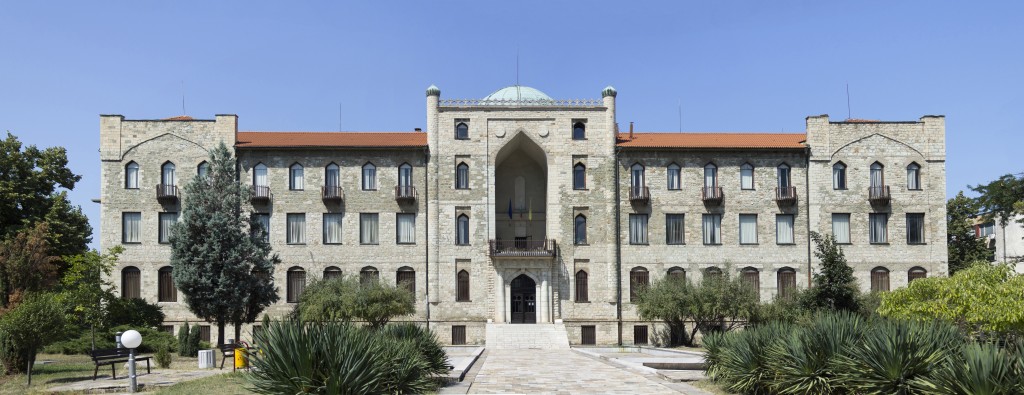
On the second floor there are four halls showing the natural habitats of the Eastern Rhodopes. Here are petrified fossils of oysters, snails, sea urchins, sea stars, coral, trees, and even fish. There are also medicinal plant collections, ore-bearing minerals, and photos of unique rock formations resembling a hay stack, mushrooms, an elephant, and stone forests. There are photos of fractured alpine landscapes caused by shifting tectonic plates, among illustrations of other natural wonders.
On the third floor there is an ethnographic exhibition that takes up in ten rooms, with displays from the 19th and 20th centuries. Here visitors can observe the region’s characteristic activities, such as agriculture, herding, coal mining, metalworking, shoemaking, sewing, weaving, and making cloth on a loom. There are also installations displaying the traditional folk celebrations and customs of inhabitants living in the Kardzhali region.
5. Thracian Sanctuary at Tatul Village
The Thracian sanctuary near Tatul Village, Momchilgrad Municipality, is one of the most imposing megalithic monuments discovered on the territory of Bulgaria. It lies just 200 m away from the village and approximately 15 km away from Momchilgrad.
The sanctuary is a massive rock structure and its top is a truncated pyramid. The complex comprises two sarcophagi, a rectangular bed for the main altar, and a three-metre-deep well. It dates back to the end of the 5th and the beginning of the 4th centuries BC. Evidence to that is provided by the clay vessels that were discovered in the region.
The rock pyramid and the tombs surrounding it were built in the 13th – 11th centuries BC when the sanctuary reached its first zenith. The clay altars that were used for the sacrifices form a circle. Hundreds of religious artefacts were found there, including clay human idols and spindle elements, models of vessels, bronze items, figures of the God of the Sun, etc.
During the excavations in 2004 – 2007 some unique clay items related to the sun deity were discovered: three model wheels of a Heavenly Chariot and a part of a gold mask.
In the 13th – 12th centuries the sanctuary was damaged by earthquakes. According to historians the sarcophagus, the truncated pyramid and the side chamber illustrate the funerals of Orpheus and King Rhesus of Thrace, who according to myths reigned in the southern part of the Rhodopes and fought in the legendary Trojan War.
A massive wall made of huge parallelepiped-shaped stone blocks was built during antiquity. Several buildings were discovered inside the sanctuary. One of them is a marvelous temple with 6 m-high walls that have survived to this day. An entire collection of bronze seal-rings dating back to the age of Antiquity was also found there.

Construction and development activities was discovered in the area of the sanctuary in the first years of the 1st century AD. The renovated sanctuary existed until the 50s – 60s.
The place was populated again in the second quarter of the 3rd century. Numerous Roman ceramic artefacts from this period were discovered. It is believed that the Hellenistic temple and the buildings surrounding it were transformed into a fortified Roman villa that became the residence of a wealthy local aristocrat. The estate was burnt down in 267 – 269 when the Goths invaded the Rhodopes. At the end of the 3rd century the villa was restored but with a much more primitive design.
The new heyday of the region began in the 9th – 10th centuries. Another set of reconstructions took place during this period.
The final period during which the hill near Tatul Village was inhabited by people is marked by a medieval necropolis. Eight of its graves were studied. The necropolis was built no later than the mid-13th century and marked the end of centuries-long life on the hill near Tatul Village.
The site is open for visitors. There is a security guard on the site and it is under constant video surveillance.
The Wonders of Bulgaria Campaign took place in 2011 and after online voting the site was named one of the 10 wonders of Bulgaria.
Restaurants in Kardzhali
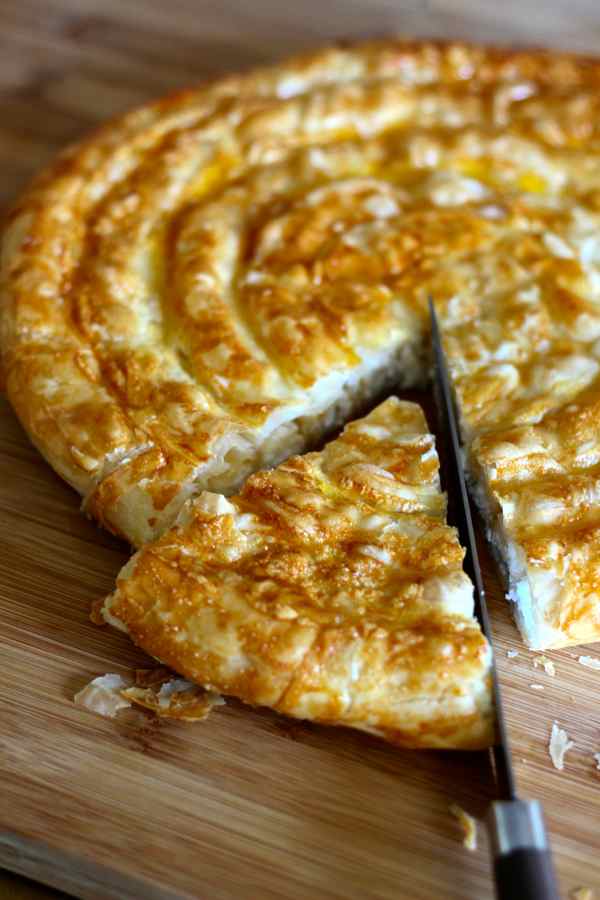
A Bulgarian legend says that when God created the world, he gave some countries the most beautiful sea, others the desert, others the pastures and the mountains.
When it was Bulgaria’s turn, there was nothing left to give and God took the best pieces of the other countries and offered them to Bulgaria.
People say that Bulgarian cuisine is the perfect reflection of this legend. It is representative of all the cuisines of Eastern Europe and is one of the pillars of Balkan cuisine. It shares a number of dishes with Persian, Turkish, Greek, Russian, and Middle Eastern cuisines.
Bulgarian cuisine, like most other cuisines in the Balkans, is a simple, rustic and peasant cuisine based on ingredients such as vegetables, meat (especially pork), yogurt and cheese.
Among the most popular dishes of Bulgarian cuisine, there is a wide variety of hot and cold soups, the most popular are the tarator for cold soups and chorba for hot soups, and excellent salads such as the famous shopska.
According to Sofia in August 2019, The food at the Restorant Vodenicata where she ate was delicious, “there was a lot of space inside and outside, so groups are welcome. It has 2 floors. The staff is friendly and polite. It seems there is also a possibility for live music as on the 2nd floor there are some instruments on a small stage. The food is traditional, so a lot of meat. There are but also a lot of salads and extra dishes that vegetarians may have. There’s also fish in the menu. So there’s something for everyone. I didn’tl like the table cloths, though. They seemed old, although I think the idea behind them was to look traditional.”
Here is a small sample of Restaurants to Check out in Kardzhali, Bulgaria
1. Restorant Vodenicata
2. Old House
3. Mehana Stenata
4. Friends Bar & Dinner
5. Turkish Restaurant Efes
Resources
Wikipedia Commons
The Thracian sanctuary at Tatul Village
Bulgaria: Banitsa by Vera Abitbol
Bulgaria Kardzhali | Bulgaristan Kırcaali | Aerial Cinematic Drone Video



